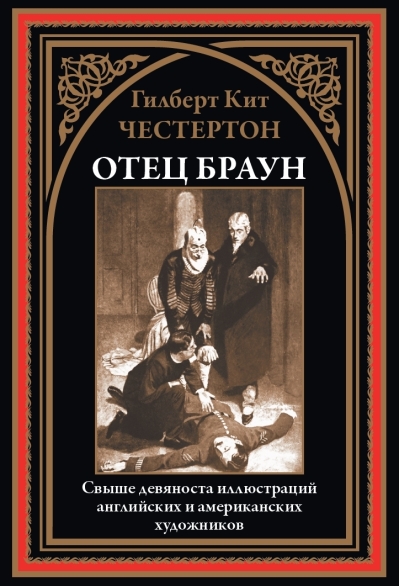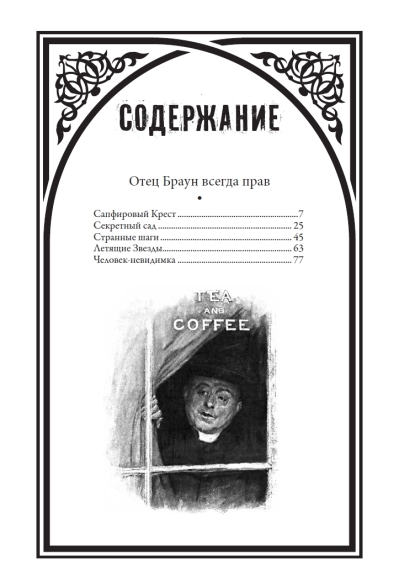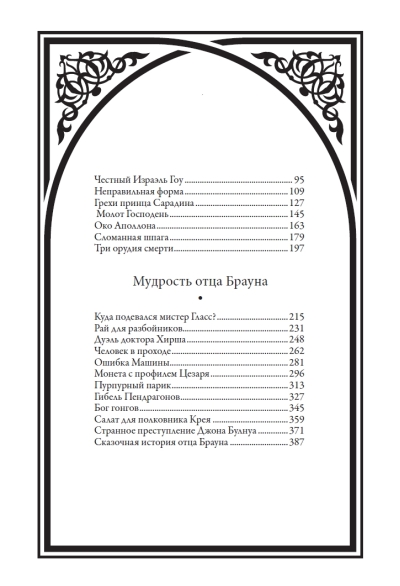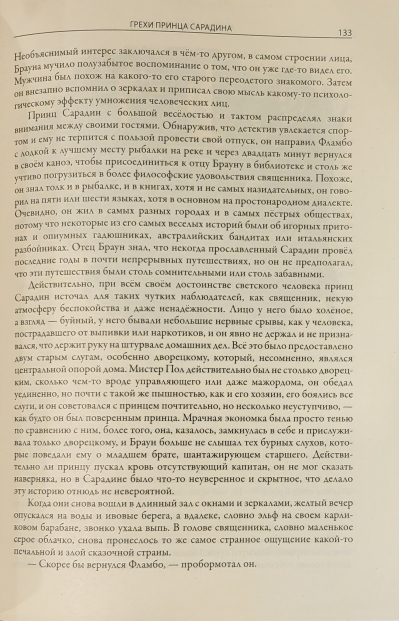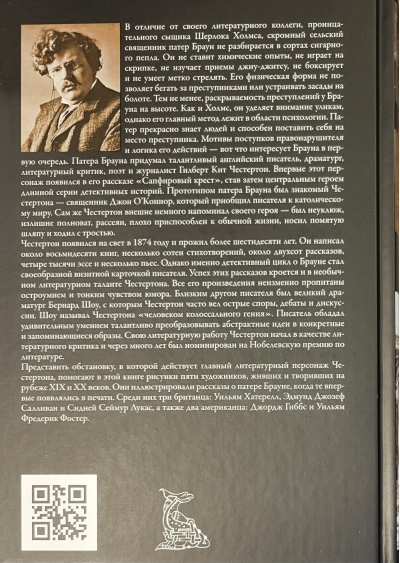Father Brown
The book includes twenty-four stories by the English writer and playwright Gilbert Keith Chesterton (1874-1936), whose protagonist is the amateur detective Father Brown. The stories are combined in two collections: "Father Brown is always right" and "The Wisdom of Father Brown". All texts are translated by Dmitry Mochnev. The book is decorated with illustrations by five artists -- three British: William Hatherell (1855-1928), Edmund Joseph Sullivan (1869-1933), Sidney Seymour Lucas (1878-1954), and two Americans: George Gibbs (1870-1942) and William Frederick Foster (1883-1953).
Unlike his literary counterpart, the shrewd detective Sherlock Holmes, humble country priest Father Brown doesn't know the varieties of cigar ash. He doesn't do chemical experiments, play the violin, study jujitsu, box or shoot. His physical condition does not allow him to chase criminals or ambush them in a swamp. Nevertheless, Brown's crime-solving skills are top-notch. Like Holmes, he pays attention to the evidence, but his main method lies in the field of psychology. Pater knows people well and is able to put himself in the place of the criminal. The motives of the offender and the logic of his actions - that's what interests Brown in the first place. Pater Brown was invented by a talented English writer, playwright, literary critic, poet and journalist Gilbert Keith Chesterton. This character first appeared in his story "The Sapphire Cross", then became the central character of a long series of detective stories. The prototype of Pater Brown was an acquaintance of Chesterton - a priest John O'Connor, who introduced the writer to the Catholic world. Chesterton himself outwardly slightly resembled his hero - was clumsy, overweight, absent-minded, poorly adapted to ordinary life, wore a wrinkled hat and walked with a cane.
Chesterton was born in 1874 and lived more than sixty years. He wrote about eighty books, several hundred poems, about two hundred short stories, four thousand essays and several plays. However, it is the detective cycle about Brown that has become a kind of hallmark of the writer. The success of these stories lies in the unusual literary talent of Chesterton. All his works are invariably imbued with wit and a subtle sense of humor. A close friend of the writer was the great playwright Bernard Shaw, with whom Chesterton often led sharp arguments, debates and discussions. Shaw called Chesterton "a man of colossal genius." The writer had an amazing ability to transform abstract ideas into concrete and memorable images with talent. Chesterton began his literary work as a literary critic and many years later was nominated for the Nobel Prize for Literature.
To visualize the setting in which Chesterton's main literary character operates, this book is helped by drawings by five artists who lived and worked at the turn of the nineteenth and twentieth centuries. They illustrated the stories of Father Brown when they first appeared in print. They include three Britons, William Hatherell, Edmund Joseph Sullivan and Sidney Seymour Lucas, and two Americans, George Gibbs and William Frederick Foster.
See also:
- All books by the publisher
- All books by the author
- All books in the series Library of World Literature



